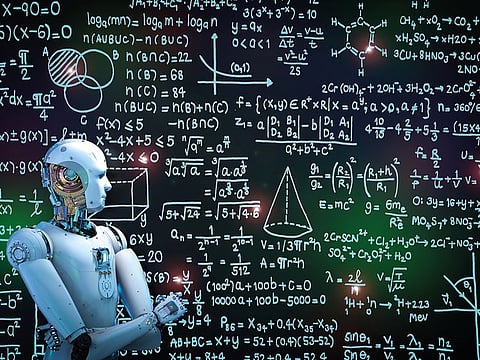Mixed reality set to transform education
How a nascent but powerful education tool can fuel inspiring classroom experiences

When you live through a time of great change, you cannot help but notice how that change comes about. You notice the building blocks – who does the innovating and what tools they use. Technology is never far from the innovation stage. Fire, the wheel, steam, electricity, and the Internet have all pushed the boundaries of the human experience. And when crises arrive, we turn to these technologies to steer us through.
During the pandemic, technologies – most of them native to the intelligent cloud – empowered governments to keep citizens informed, allowed drug companies to roll out vaccines with phenomenal speed, helped businesses to continue operations, and kept citizens safe and connected.
But for now, let’s consider what technology did for education. During the pandemic it paved the way to distance learning. Microsoft was a witness to the deployment of collaborative tools on a massive scale in the UAE and throughout the region as schools, education authorities and colleges grappled with the moment and came out on top. Hundreds of thousands of students and professors remained connected. And in a region where future skills are a hot policy topic, learning continued unabated.
Imersive mixed reality
The pandemic, while an accelerator of digital transformation in education, was not a one-shot source of inspiration. In 2021, as part of a post-pandemic strategy, GEMS Education invested heavily in its cloud capabilities. Right now, across the GCC and beyond, higher-education institutions are looking to the next generation of classroom experiences. And mixed reality – a technology that overlays digital constructs on real-world environments in real time – has become the ultimate teacher’s assistant.
Imagine being able to look at, and manipulate, an internal-combustion engine or a human chest cavity while learning about them for the first time. Imagine being able to take a stroll along Orion’s Belt or through a lower intestine. Imagine watching historical events unfold around you, instead
of in the dusty pages of a book. All of these, and more, are potential use cases for mixed reality in the education sector.
Imagine the leaps forward we can make in student engagement and knowledge retention. On second thought, there is no need to imagine. We have data. Studies have shown a 22 per cent improvement in test scores when students are given access to immersive technology. And this can be attributed to the 35 per cent increase we see in student engagement and knowledge retention when using these technologies.
Mixed reality has the potential to break down emotional barriers by giving new angles on subject matter. While reading textbooks and listening to face-to-face lectures have always been enjoyable for some, legacy classroom experiences have famously left many others behind.
For engagement in the classrooms of old, schools and colleges had to rely too much on the personality of the professor, too many of whom were understandably unable to meet the criteria of “stage magician/stand-up comic”. With mixed reality, the material itself comes alive, and the lecturer becomes a steward of the experience, and yet empowered by it. Engaged students ask more questions, so the teacher has a more rewarding work experience and goes further in challenging students to learn more and ask yet more questions.
More numbers
This is a circle of improvement that is reflected in the figures. Microsoft recently launched HoloLens 2 in the UAE. When we develop our mixed-reality headset, we look for ways to improve on it and so we turn to our own research.
In our study, we found that mixed-reality experiences mean educators can reduce training time by 30 per cent and instruction hours by 15 per cent. Educators’ annual hours also fall by 15 per cent. Education providers see their average operating costs drop by 10 per cent, resulting in savings of $15,000 (Dh55,000) per educator.
Microsoft recently attended GESS 2022 in Dubai. We saw the excitement around mixed-reality use cases. We are living through something of a talent crisis in the region, where quality jobs exist but employers cannot find the skillsets to fit. We can draw a line to the lack of interest, at college age or earlier, in STEM subjects. Mixed reality makes classrooms come alive and lays the groundwork for voluntary commitments to STEM careers. The tools are there and can be supplemented with other immersive devices and a range of innovative cloud-native solutions from Edutech providers.
No matter at what scale you view the issue – UAE, GCC, Middle East, or global – society needs talent. We cannot rest on this issue. If our communities are going to close capability gaps and live up to their potential, we must empower our young people so they can live up to theirs. Modern classroom experiences fuelled by mixed reality can prepare them for ambition, innovation, and achievement.

- The writer is Education Director, Microsoft UAE
Sign up for the Daily Briefing
Get the latest news and updates straight to your inbox


